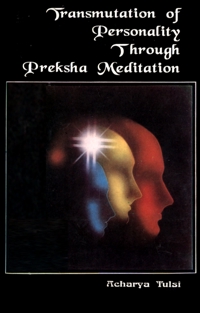
The Jain method of meditation, new-named "Preksha";
A vibrant whole, independently working!
One who enquires with unflagging zeal,
Spontaneously finds Preksha's honey-juice.
The idea of rediscovering ancient elements of Jainism suggested itself during the course of the editing of the Agamas. Many valuable elements of dhyana-sadhana scattered in the Jain Agamas were collected. These elements were evaluated and an elaborate tradition of meditation was re-established. Was this tradition of meditation known as "preksha" even in ancient times or it was you who gave it a new name?
We soon came across certain maxims of the Jain method of meditation on which research was going on and for which intense efforts were being made. The experiments in meditation conducted on the basis of these maxims proved successful. Thereupon a conviction grew that this method can be useful for everyone. As regards nomenclature, one fact is quite clear that the ancient Jain method of sadhana incorporates both ‘sanwar’ (i.e. mind-control or the subjugation of passions), and 'nirjara’ (decay of, or freedom from past sanskars). Dhyana is concerned with both. It is at once mind-control and dissolution of past impressions par excellence. There is the mention of an Agmic experiment by the name of sanwar-dhyana-yoga. This name could be acceptable even today. However, new experimentation seemed to recommend newness in nomenclature too. The determination of the title ‘preksha’ was done after a great deal of thought. The thinking behind it was as follows:
The method of sadhana is meant to make manifest the nature of the soul-constant alertness, irresistible power and spontaneous joy (veetaragta: total freedom from passions). The soul becomes manifest through meditation on the nature of the soul. "Observe the soul through the soul!" In this maxim the importance of meditation on the soul is emphasized. The observation of the soul is nothing but knowing and understanding it. The first characteristic of the soul is awareness. Awareness is a condition of knowing and seeing. Knowledge and observation mean knowing and seeing. A meditation apart from knowledge and vision, may relate to any other subject, but not to the soul. On this basis, the new method could be given two names - ‘vipassana’ and ‘preksha’.
Both these names are used in Acharang Sutra..The name ‘vipassana’, is very much prevalent among the Buddhists. In recent years, vipassana shivirs have been held from time to time. In a way, the word ‘vipassana’ has come to denote the Buddhist method of meditation. So it was thought proper to name the Jain method of meditation as ‘preksha’. Today this method is well-known by the title of ‘preksha dhyana’. Its fundamental source is Acharang Sutra. Other sources are the remaining Agamas, books written after the Agamas, and a collection of experiences and results of experiments in meditation performed during the long period of 2,500 years since Lord Mahavir. It was after a comprehensive appraisal of these sources, that the present technique of sadhana, its title and nature, have been evolved.
The technique of sadhana that you have evolved is based upon old elements scattered in the Agamas. During this long period of 2,500 years, old beliefs have changed a good deal. Many new scientific approaches are available to us today. In view of this, will it not be sheer conservatism to follow an ancient tradition? Is it not possible to harmonize it with new elements?
In order to make preksha dhyana system complete in itself, use has been made of modem scientific insights. Unless a method is in consonance with the scientific temper, it cannot prove very useful at present. Because modern man has developed a scientific outlook, it is becoming more and more difficult to recognize any element that is unscientific in its nature. Under these circumstances, if adequate use is not made in the development of a meditation technique of the latest discoveries in the field of physiology and psychology, that technique is likely to be dismissed as outdated and unscientific. Although there is nothing wrong in a technique being old, yet why should an ancient technique be deprived of contact with the new? Along with ancient elements, we have also made use of new facts and experiences. Thus, this technique, though old, is also new. Both the ancient and modern viewpoints have been harmonized in it.
Some people think that the advent of science has rendered sadhana or spirituality obsolete. However, our view is entirely different. We believe that sadhana, in union with science, can illumine many mysteries. Ancient books were consulted with a. view to determine the form of preksha. There is a mention of special psychic centers in the old texts. Their number is variously given as five, seven or nine. But according to modern books on physiology, psychic centers number about 700. How are these centers related to one another? How helpful can they be in the direction of character transformation? Facts like these can be known very precisely and made use of. Similarly, science can furnish authentic information about the endocrine system, bioelectricity, chemical changes taking place in the body, etc. Two years of experimentation. have also established the fact that the method of preksha is beneficial from all the three viewpoints-physical, mental and spiritual. There is nothing dogmatic about this technique. The new elements have been assimilated in it with as much ease as the old. Viewed thus, it is our own creation. Yet there is nothing imaginary about it and therefore; it is an expression of our ancient tradition, and is now being presented in a new way in a new environment. We firmly believe that newer experiments in the future would lend to it a unique distinction.
 Acharya Tulsi
Acharya Tulsi
